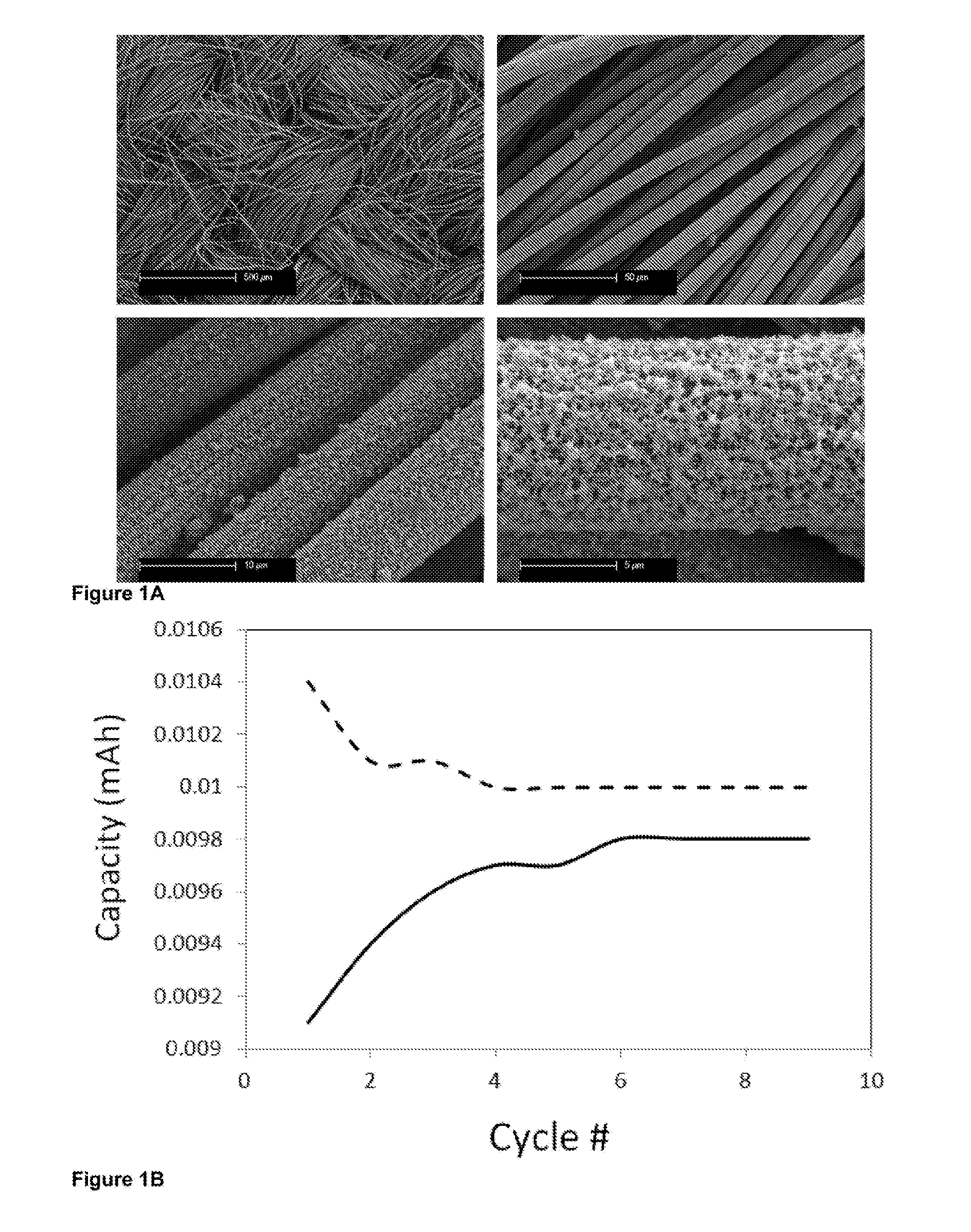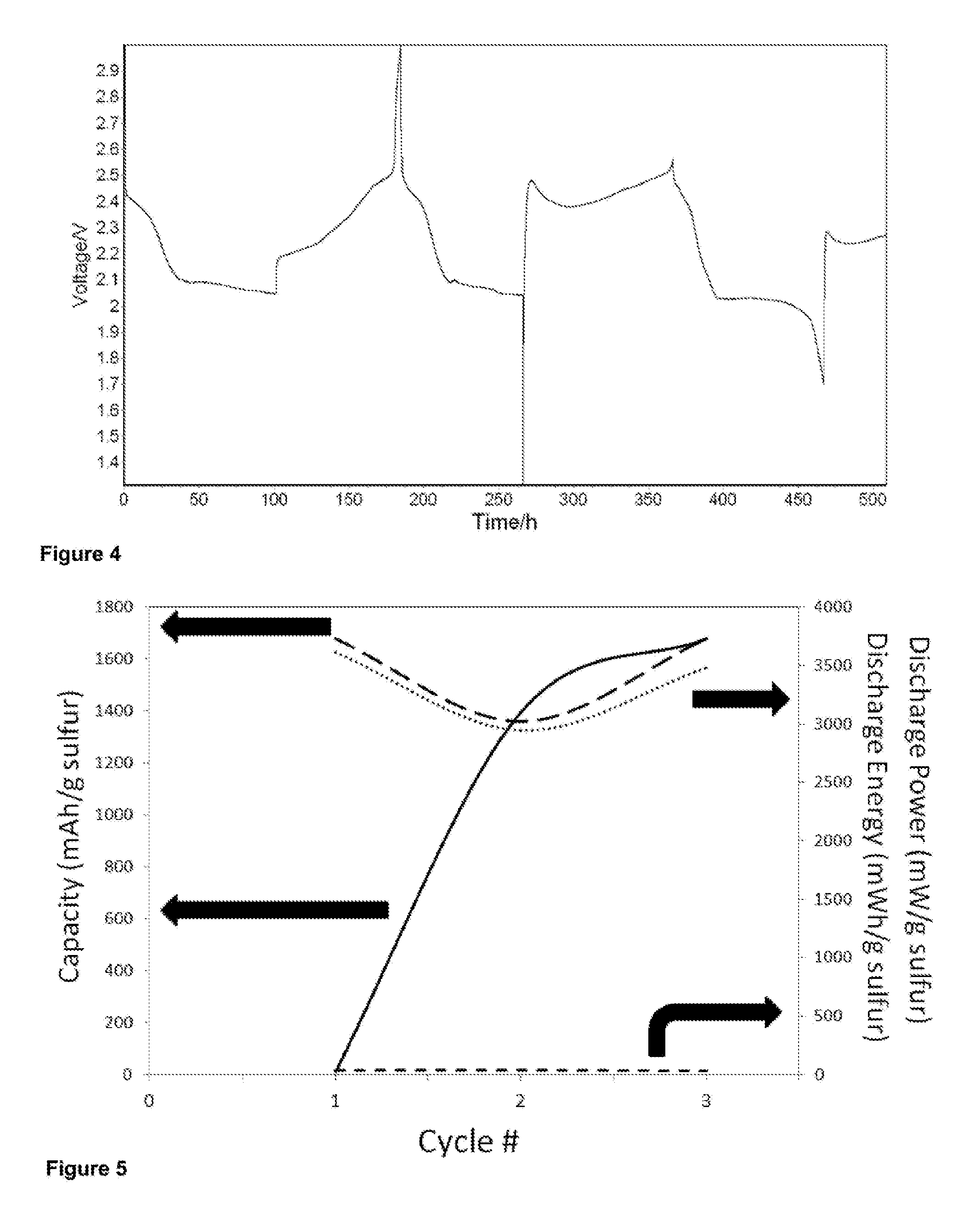Lithium-sulfur electric current producing cell
- Summary
- Abstract
- Description
- Claims
- Application Information
AI Technical Summary
Benefits of technology
Problems solved by technology
Method used
Image
Examples
example 1
Effect of Different Small Dopants in the Second Electropolymerisation Step
[0189]In order to improve the resistance of the prepared cathode and also to increase the loading of S in these cathodes, other sulfonated organic second dopants were tested. Those included AQSA, p-TSA and NapSA. These dopants were used either alone or as 1:1 mixture with HCL at 0.1 M for both. Results show that cathodes prepared without HCl show lower capacities possibility due to blocking of S by a thick layer of conductive polymer and / or poor porosity. While those prepared in presence of HCl showed higher capacities especially for pTSA. AQSA did not show high loading of S onto the cathode due to poor solubility.
example 2
Effect of Different Polymeric First Dopants in the First Electropolymerisation Step
[0190]In addition to Nafion, other negatively charged polymeric dopants were tested as a dopant in the first step electropolymerisation as shown in FIG. 10. Those included PSS, PAA and PMMA. The acid and sodium based polymers were tested. While PSS gave a smooth and uniform coating in the test model used, PAA gave a rough and non-uniform coating. In the test systems used, higher content of sulfur could be incorporated when PAA was used while higher discharge capacities were obtained when PSS.Na was used.
example 3
Effect of Different Electropolymerisation Charge During the Second Electropolymerisation Step
[0191]The effect of charge consumed during the electropolymerisation process can affect the ratio of S in these cathodes with the highest ratio obtained when small charge was passed. On the other hand, the highest discharge capacity was obtained when the highest amount of charge was used which is probably due to better electrical interaction between sulfur and the conductive polymer when the ratio of PPY to sulfur was high.
[0192]Table 3 and Table 4 indicate the compositions used and performance under certain test conditions. As the result indicate, and due to the complexity of the cells, components and electrolytes thereof, there are many factors that affect performance; however, the skilled person, coupled with the disclosure provided herein, will be able use the teachings of the invention to readily achieve a cell with the required performance, depending on a desired application and associ...
PUM
 Login to View More
Login to View More Abstract
Description
Claims
Application Information
 Login to View More
Login to View More - R&D
- Intellectual Property
- Life Sciences
- Materials
- Tech Scout
- Unparalleled Data Quality
- Higher Quality Content
- 60% Fewer Hallucinations
Browse by: Latest US Patents, China's latest patents, Technical Efficacy Thesaurus, Application Domain, Technology Topic, Popular Technical Reports.
© 2025 PatSnap. All rights reserved.Legal|Privacy policy|Modern Slavery Act Transparency Statement|Sitemap|About US| Contact US: help@patsnap.com



